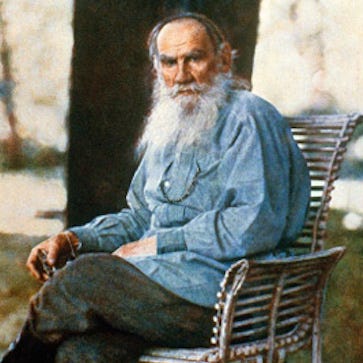Just as no two writers are the same, there are endless ways to publish on Substack. Here, we explore some of the more creative approaches, but this list isn’t exhaustive. Share your favorites in the comments, or consider trying out one of the formats below.
Serialize a book
Increasingly, writers are choosing to serialize their books on Substack. From established authors, like Salman Rushdie and Chuck Palahniuk, to fresh voices pioneering a new medium for publishing fiction. Often, writers share chapter-by-chapter excerpts, keeping their audiences hooked and reading along together. This gives writers the opportunity to engage directly with their readers and get feedback in real time.
Are you reading a great piece of serialized writing on Substack? Share your recommendations in the comments.
Put together a playlist
Forget algorithmic music recommendations: writers are handpicking their favorite tracks and sharing music playlists directly with their readers on Substack. Some adopt specific formats, such as posting a small number of tracks each week (see 3 by 7 and WhoHears), while others focus on interviews, genres, moods, or a single song.
Looking for ambient music to get some work done? Flow State recommends hours of music that’s perfect for maintaining focus, while Coffeehouse offers an hour of soothing café sounds weekly.
There are many great music curators sharing their picks on Substack. To discover more, see our recent shoutout thread dedicated to music on Substack.
Host a book club
Substacks fostering read-along communities are plentiful. Some groups tackle one classic book over the course of a year, like Dracula Daily and The Big Read: War and Peace. Others choose a book to read over the course of a month or two: Book Club by Numlock, for instance, lets readers vote on the next book from a rotating selection of options; Orchard Street Reading Society has a geographic focus, centering on books written by New Yorkers or set in New York and incorporating regular field trips and events in the city.
Another approach, favored by Article Club, is to read, annotate, and discuss one thought-provoking article a month. Finally, Silent Book Club invites members to read together in silent camaraderie. Are you part of a book club on Substack? Let us know in the comments.
Offer a class or a lesson
Substack can be a tool for facilitating lessons, workshops, and classes. Story Club, from beloved writer and professor George Saunders, explores creative writing in an interactive, community-minded forum. Professor and former U.S. Secretary of Labor Robert Reich hosts a popular course on wealth and poverty, complete with audio memos and full-length pedagogical videos.
Others dedicate their Substacks to fostering creativity in children: DrawTogether with WendyMac guides kids to discover the world through drawing. For the Love of Words adds on to the book club format with discussion questions and creative-writing prompts for kids.
Often, tutorials and workshops can take readers off the page and into a thriving community of like-minded people. Fireside’s Ashley Rodriguez invites readers to a cook-along to try their shared recipes.
Creative accountability
Sometimes you need a community to help you tackle a creative project. That’s the idea behind the #1000wordsofsummer project on Jami Attenberg’s Craft Talk, a 15,000-strong community of writers of all levels who support each other in writing 1,000 words a day for two weeks. (The next round starts June 4, 2022.)
Similarly, #The100DayProject is a companion newsletter to the #100DayProject, a global initiative that sees thousands of artists commit to daily creative work.
Carissa Potter invites subscribers to paint with her every Friday on her Substack Bad at Keeping Secrets, while The Artist Entrepreneur Club shares a weekly challenge to help artists think like businesspeople.
Give advice
The stalwart advice column never fails to find its way to eager readers, and Substack is no exception. Writers are sharing advice on a broad range of topics and experiences, from “the preeminent deranged advice column” by author John Paul Brammer, ¡Hola Papi!, to advice on How Not to F*ck Up Your Face from former O beauty director Valerie Monroe.
Substack lends itself to advice columns that have platform-hopped across the internet. Heather Havrilesky’s Ask Molly was created as the “evil twin” to her long-standing advice column, also on Substack, Ask Polly. Elle columnist of 27 years E. Jean Carroll continues Ask E. Jean on Substack, where she is likely to “start roaring and clapping and cheering for the correspondent to pick herself up and go on.”
Create or curate images
Forgoing longform text for the simplicity of images, some Substackers are focusing purely on the visual. Textile Tales, for example, offers a nearly wordless medley of textile and fiber art, while Something I Saw shares a context-free piece of art for readers to contemplate.
Snack time by Ariella Elovic mixes illustration with writing in a weekly comic, while Edith Zimmerman creates short illustrated stories about her life in her comic Drawing Links.
Games and puzzles
Brainteasers and puzzles are another creative twist on Substack publishing. Three’s a party invites readers to try their hand at guessing the right answer with a daily challenge whereby author Colin Medwick provides three songs with a hidden common thread in the lyrics. Who Am I? is a weekly meta picture puzzle with a hidden theme—a brain tickle, if you will.
What other publications are experimenting with unique formats? Chime in with your recommendations in the comments.











